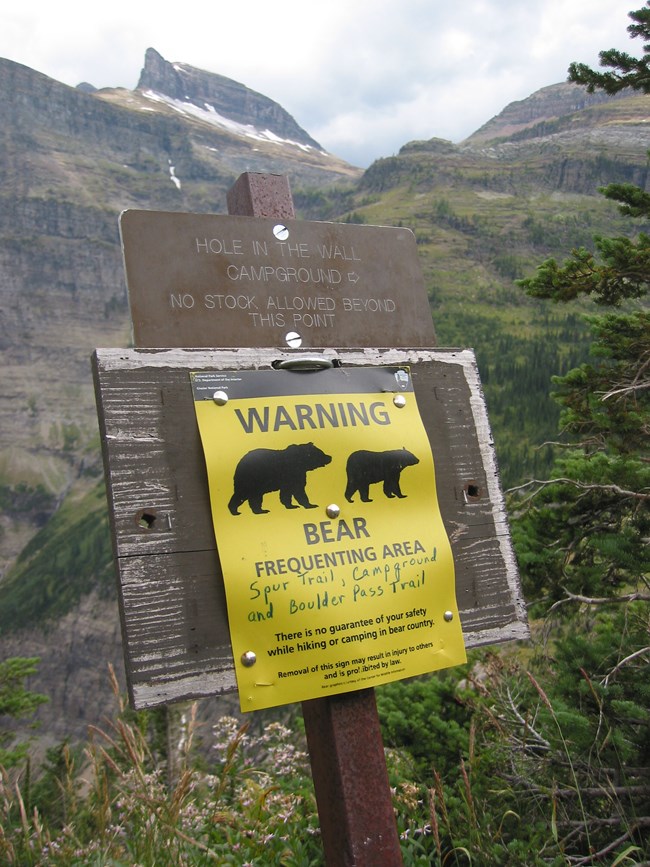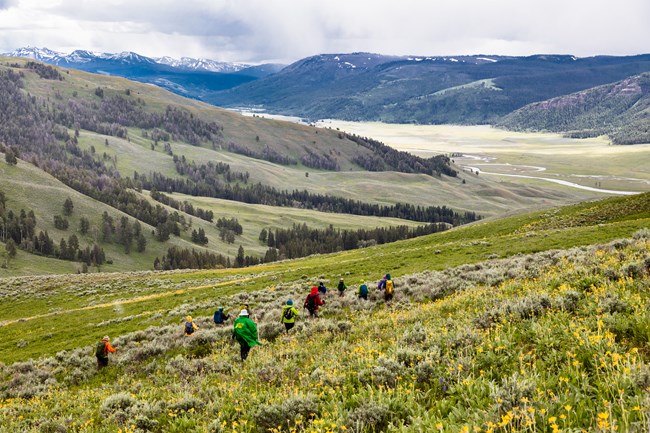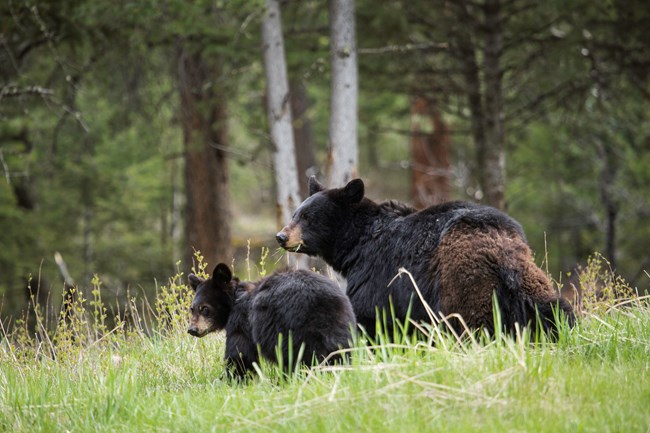Part of a series of articles titled Bear Country.
Article
Hiking in Bear Country

NPS Photo / Jim Peaco
Be aware. Be alert while on the trail, and always be on the lookout for bears. Keep an eye out for fresh tracks, scat, other signs (torn up logs, digging, fresh claw marks on trees), and carrion (carcasses) in the area.
Check with individual parks to find out what kind of bears can be found in the park and if any areas are closed for bear management. Stay out of these areas!

NPS Photo / David Restivo
Know your bear country. Watch out for good bear habitat. Bears prefer habitat that’s suitable for them to feed, rest, and sleep—thick brush and heavy tree stands for example. Also, be mindful of features that can easily hide a bear, like tall bushes, gulleys, and boulder fields.
Be aware of places you might encounter a feeding or sleeping bear. During the late summer and fall, bears will be foraging, which can make it harder for them to notice you. Watch out for large swaths of flowering plants, or plants that have fruit on them like berries. Be extra careful near water sources where bears might be feeding or drinking. Tall vegetation can also hide bears that are foraging or resting.

NPS Photo / Jacob W. Frank
Hike in a group. Hiking in a group will decrease your chances of surprising a bear, and it decreases your chances of a bear attack. A group of three or more hikers is more likely to deter an encounter, and bears will be able to see, hear, and smell you more easily. Hiking in a group also increases the odds at least one person will be alert and notice a bear before a surprise encounter.
Trail running in bear country is highly discouraged. Trust us — you do NOT want to surprise a bear or provoke an attack.
Make noise while hiking. Making noise on the trail can alert a bear to your presence before you have the chance to surprise it. Talk to your partners and occasionally sing loudly, yell “hello” or “whoop! whoop!” and clap your hands loudly to let any bears know you’re coming. Make extra noise when you’re close to loud natural features such as rivers, streams, and on windy days. Also make lots of noise when approaching features that make it hard for a bear to see you (such as a crest in the trail or a blind corner).
Bear bells may be a popular item to put on your backpack, but they don’t effectively warn a bear you’re in the area. Bears won’t hear the bells until you’re too close. Yelling, clapping, and talking are more effective ways of alerting a bear to your presence.

NPS Photo / Jake Bortscheller
Never approach a bear that doesn’t see you—it could lead to surprising the bear, which can cause the bear to react.
Avoid hiking at dawn, dusk, and at night. These are the time periods when bears are most active. They’re often foraging or hunting during these times.

NPS Photo / Neal Herbert
Watch out for sows (adult mother bears) with cubs. If you find a cub, or a pair of cubs, leave the area. Even if you don’t see the sow right away, they could be nearby and they will be ready to protect their cubs. DO NOT APPROACH CUBS. Never get between a sow and her cubs. If you find yourself in this situation, slowly and calmly move away from the bears in a non-threatening manner and watch the sow. Be ready to defend yourself if the sow becomes aggressive.
Last updated: June 29, 2018
